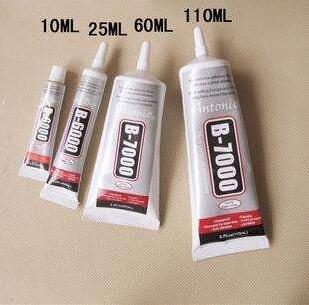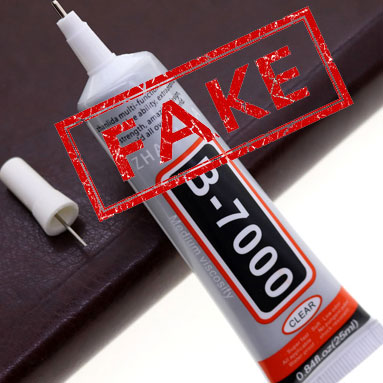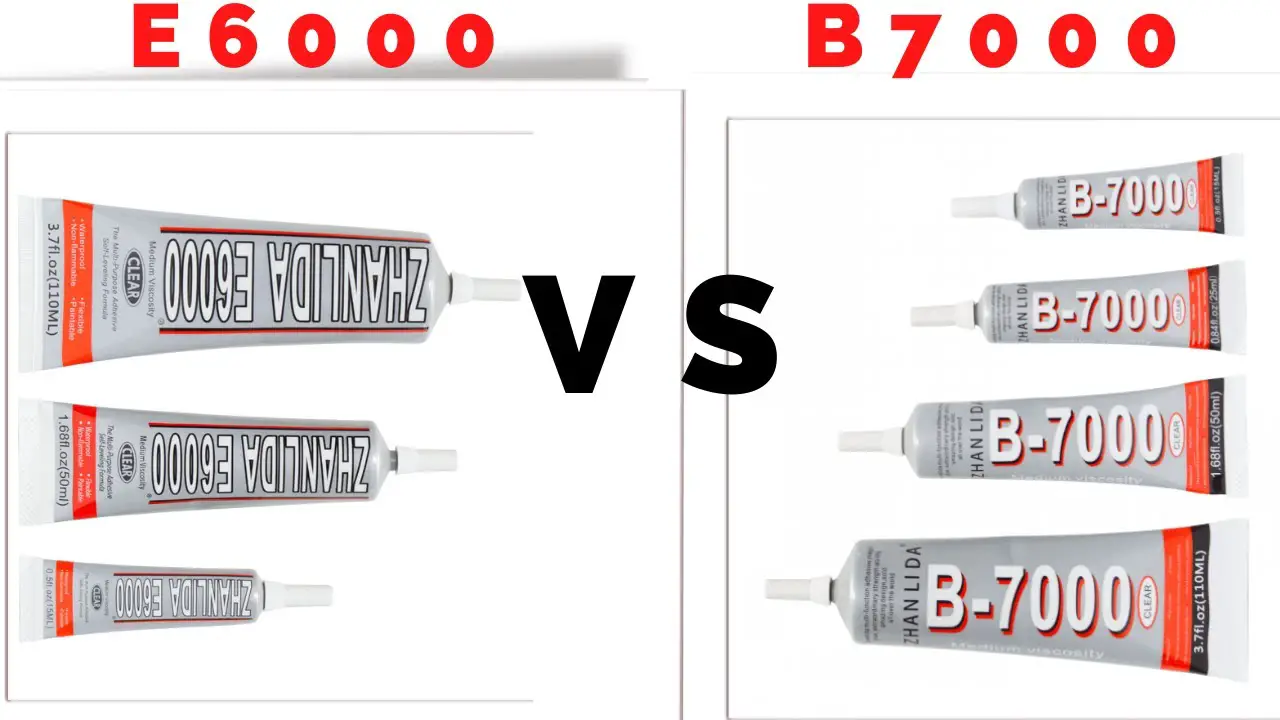E6000 and B7000 are two popular adhesive options. E6000 offers a strong bond suitable for various materials, while B7000 is known for its flexibility and versatility in crafts and jewelry making.
When it comes to choosing the right adhesive for your project, it’s important to consider the specific needs and materials involved.
With their respective strengths and applications, E6000 and B7000 provide options for different requirements. We will explore the characteristics of these two adhesives, helping you make an informed choice for your project.

Contents
Chemical Composition
E6000 and B7000 adhesives have different chemical compositions. E6000 is formulated with industrial-strength bonding properties, while B7000 is designed for precision bonding in electronics.
Understanding their chemical composition helps to determine the most suitable adhesive for specific applications.
E6000 and B7000 are popular adhesive products known for their strength and durability. Understanding the chemical composition of these adhesives can help users make informed decisions about their applications and potential uses.
Ingredients Of E6000
The chemical composition of E6000 contains primarily ethyl acetate, toluene, and acetone. These solvents contribute to the adhesive’s strong bond and quick drying time, making it ideal for various bonding applications.
Ingredients Of B7000
In contrast, B7000 is composed of butyl rubber, synthetic resin, and organic solvents. The unique blend of these ingredients provides B7000 with its flexibility, weather resistance, and excellent adhesion to various materials.
Applications
Applications of adhesives and sealants cover a broad range of industries and tasks. Both E6000 and B7000 are versatile choices, each with its own set of specific applications that offer secure and reliable bonds.
Understanding the common uses of E6000 and B7000 can help in selecting the most suitable adhesive for various projects.
Common Uses Of E6000
E6000 offers a strong and flexible adhesive option suitable for a variety of materials, including metal, glass, wood, fabric, and more. It is commonly used for:
- Repairing jewelry and glassware
- Securing rhinestones and beads
- Assembling and repairing electronic devices
- Bonding rubber and plastics
Common Uses Of B7000
B7000 is known for its clear and waterproof bonding properties, making it ideal for different applications. Typical uses of B7000 include:
- Fixing phone screens and displays
- Attaching decorative elements to phone cases
- Repairing and assembling small electronic components
- Creating water-resistant seals on various surfaces
Adhesive Strength
Adhesive strength is a crucial factor when comparing E6000 and B7000 adhesives.
Comparison Of Bonding Strength Of E6000
E6000 adhesive exhibits strong bonding capabilities.
- Perfect for heavy-duty projects.
- Provides a secure and durable hold.
- Ideal for various materials like metal, glass, and plastic.
Comparison Of Bonding Strength Of B7000
B7000 adhesive is known for its reliable bonding strength.
- Offers excellent adhesion on multiple surfaces.
- Great for precision bonding of delicate items.
- Ensures a long-lasting and robust bond.

Flexibility And Durability
When it comes to adhesive solutions, it’s important to consider both flexibility and durability. Two popular choices in the market are E6000 and B7000.
Both of these adhesives offer excellent bonding properties, but understanding their specific flexibility and durability characteristics can help you make an informed decision for your project.
Flexibility Of E6000
E6000 is known for its remarkable flexibility, making it a versatile choice for various applications. Whether you need to bond different materials together or require an adhesive that can withstand movement and stress, E6000 has got you covered.
Its elastic nature allows it to bend and adapt without losing its adhesion strength. From textiles to plastics, E6000 ensures a strong bond that can withstand twists and turns.
Flexibility Of B7000
Similar to E6000, B7000 exhibits notable flexibility, providing reliable bonding for various materials. It can withstand pressure and movement, making it suitable for applications that require flexibility.
With B7000, you can confidently bond different materials without worrying about the adhesive cracking or peeling. This adhesive is ideal for projects that involve curved surfaces or materials that experience frequent bending.
Durability Of E6000
E6000 is renowned for its exceptional durability. Once it’s fully cured, this adhesive forms a strong bond that can withstand environmental factors like temperature changes and moisture.
Whether you’re working on indoor or outdoor projects, E6000 remains dependable. Its resistance to water, heat, and chemicals make it a reliable adhesive that holds up over time.
When you need a long-lasting bond that can handle various conditions, E6000 is an excellent choice.
Durability Of B7000
Similar to E6000, B7000 offers impressive durability that ensures your projects stand the test of time. This adhesive is resistant to water and other environmental factors, making it suitable for both indoor and outdoor applications.
B7000’s durable bond can withstand different temperatures and minor impacts, ensuring that your materials stay firmly in place. Whether you’re working on jewelry, electronics, or DIY crafts, B7000 provides a reliable and long-lasting adhesive solution.
Drying And Curing Time
The drying and curing times of E6000 and B7000 vary, with E6000 generally drying faster. It is important to consider these differences when choosing a glue for your project.
E6000 Curing Time
E6000 is a popular adhesive known for its strength and versatility in crafting and DIY projects. When it comes to curing time, E6000 offers a quick drying process. Generally, E6000 takes approximately 24 hours to dry completely.
However, always check the product label for specific instructions as the curing time might vary depending on factors like temperature and humidity. During the drying process, it is important to note that E6000 forms a strong bond once it is dry to the touch.
But for maximum strength, it is recommended to wait the full 24 hours before handling or applying any stress to the bonded materials. This allows the adhesive to fully cure and ensures a long-lasting and durable bond.
B7000 Curing Time
B7000 is another adhesive commonly used in various applications such as phone repairs, jewelry making, and more. When it comes to curing time, B7000 has a slightly faster drying process compared to E6000.
Typically, B7000 takes around 12 to 24 hours to fully cure. Like E6000, the curing time of B7000 can be influenced by environmental factors. To achieve optimal results, it is important to allow sufficient time for the adhesive to dry and cure completely.
This ensures that the bond formed with B7000 is strong and reliable. When using both E6000 and B7000, keep in mind that excessive heat or humidity can affect the drying and curing process.
It is advisable to work in a well-ventilated area with moderate temperatures to facilitate the curing process. In conclusion, E6000 and B7000 are both effective adhesives with slightly different curing times.
E6000 typically takes around 24 hours to dry completely, while B7000 can cure in approximately 12 to 24 hours. Always refer to the product instructions for specific guidelines and ensure proper drying and curing to achieve the best results.
Health And Safety
When it comes to working with adhesives like E6000 and B7000, health and safety considerations are paramount. Let’s delve into the safety aspects of each product:
Safety Considerations Of E6000
- E6000 contains harmful chemicals that can cause skin irritation.
- Ensure proper ventilation when using E6000 to avoid inhaling fumes.
- Wear protective gloves and goggles to prevent skin and eye contact.
- Store E6000 in a cool, dry place away from flames and heat sources.
Safety Considerations Of B7000
- B7000 is known to cause skin sensitivity with prolonged exposure.
- Work in a well-ventilated area when using B7000 to prevent inhaling harmful vapors.
- Use protective equipment such as gloves and a mask for added safety measures.
- Keep B7000 away from ignition sources and store in a sealed container.
Cost And Availability
E6000 and B7000 are two popular adhesives known for their strong bonding capabilities. In this section, we will compare the cost and availability of these products, providing insight into their pricing and market presence.
Price Comparison
Let’s compare the pricing of E6000 and B7000 to understand their cost differences. The table below illustrates the price comparison of these two adhesives:
| Adhesive | Price (per unit) |
|---|---|
| E6000 | $5.99 |
| B7000 | $4.99 |
Availability In The Market
When it comes to availability in the market, both E6000 and B7000 can be found in various stores and online platforms.
However, their availability may vary based on geographical location and the specific requirements of users. It’s important to check with local retailers and online suppliers to ensure the availability of these adhesives.
Frequently Asked Questions For E6000 Vs B7000
Which Is Better B6000 Or B7000?
The b7000 is better than the b6000, offering improved features and performance for users.
What Is B7000 Glue Used For?
B7000 glue is used for bonding various materials like metal, glass, and plastic together. It is a strong adhesive suitable for DIY crafts, phone repair, and jewelry making projects.
What’s The Difference Between E6000 And E7000 Glue?
E6000 is more flexible and suitable for craft projects, while E7000 is stronger and better for industrial use. Both provide great adhesion.
What Is Stronger Than B7000?
E6000 adhesive is stronger than b7000. It provides a more durable bond for various materials.
Conclusion
To sum up, both E6000 and B7000 adhesives offer strong bonding capabilities. Depending on your specific project needs, one may be more suitable than the other.
Consider factors like drying time and flexibility when choosing between the two. Experiment to find the best fit.

